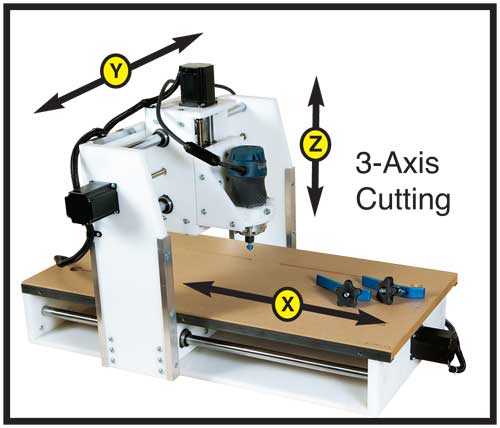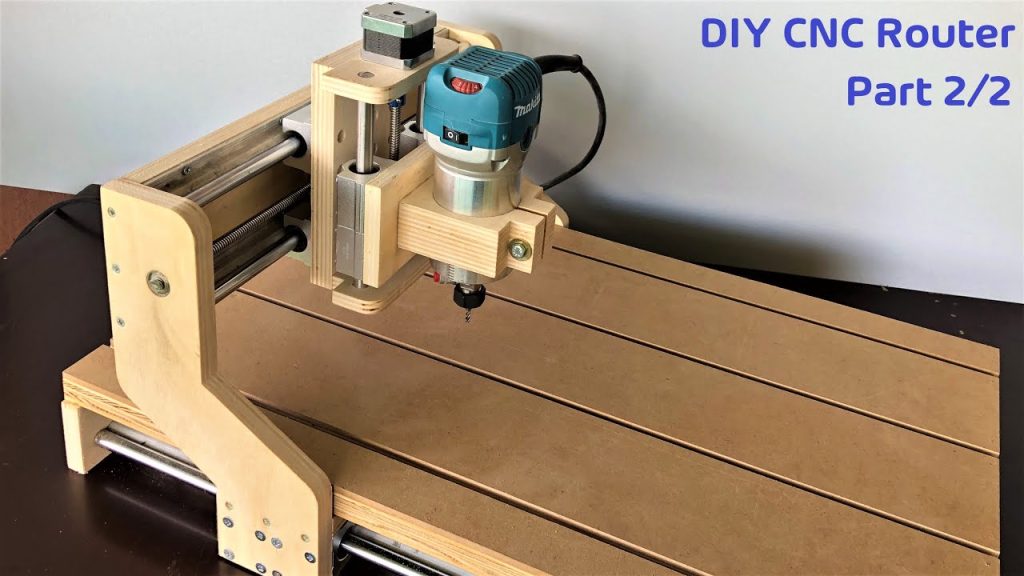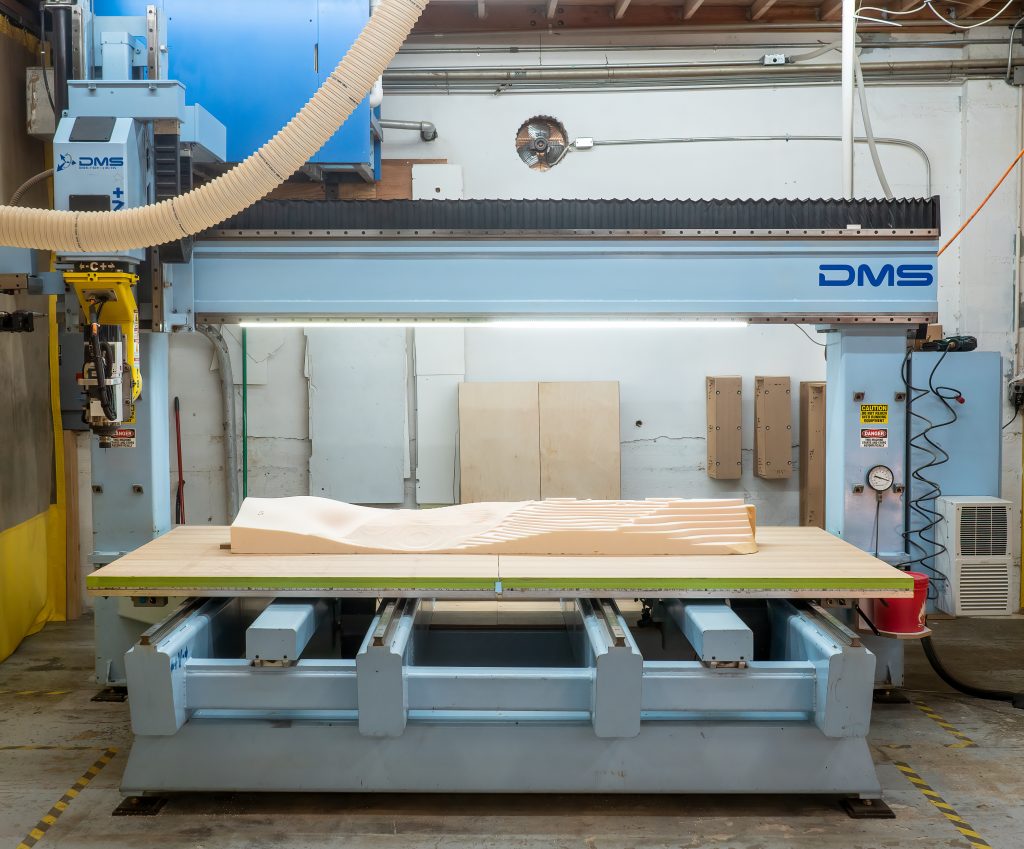Table of Contents
- How to Set Up a CNC Router?
- Step 1: Assemble the CNC Machine
- Step 2: Install the Control Board
- Step 3: Install the Spindle and Motor
- Step 4: Install the Limit Switches
- Step 5: Configure the Software
- Step 6: Test the Machine
- Step 7: Set Up the Material
- Step 8: Load the G-code Program
- Step 9: Cut the Material
- Step 10: Clean and Maintain the Machine
- Freequently Asked Questions
If you’re looking to get into the world of CNC routing, then you’ll need to know how to set up your equipment properly. A CNC router is a powerful machine that can be used for a variety of tasks, from cutting out intricate designs to engraving and carving. In this guide, we’ll take you through the steps you need to follow to set up your CNC router and get started on your first project.
Firstly, you’ll need to ensure that you have all the necessary equipment to hand. This will include your CNC router, computer, software, and any additional accessories that you may need. Once you have everything ready, you can start setting up your CNC router, following the manufacturer’s instructions carefully. With a bit of patience and attention to detail, you’ll soon be up and running with your new machine, ready to start creating amazing designs and projects.
- Choose a suitable location for your CNC router with enough space for the machine and material.
- Assemble the machine by following the manufacturer’s instructions.
- Install the necessary software and drivers on your computer.
- Connect the machine to your computer using a USB cable.
- Calibrate the machine by setting the origin point and adjusting the cutting depth.
- Test the machine by running a simple program to ensure everything is working correctly.
How to Set Up a CNC Router?
Setting up a CNC router can be a daunting task for beginners, but it doesn’t have to be. With a little bit of planning and patience, you can have your CNC router up and running in no time. In this article, we’ll walk you through the steps of setting up a CNC router, from assembling the machine to configuring the software.
Step 1: Assemble the CNC Machine
Assembling a CNC machine can be time-consuming, but it’s an essential step in setting up your CNC router. If you purchased a pre-built machine, the assembly process might be straightforward. Follow the manufacturer’s instructions carefully to ensure that you don’t miss any critical steps. If you’re building a DIY CNC router, you’ll need to source all the necessary parts and assemble the machine from scratch.
Once you have assembled the machine, make sure to check that all the components are properly secured and tightened. Loose components can cause the machine to malfunction during operation, leading to poor results or even damage to the machine.
Step 2: Install the Control Board
The control board is the brain of your CNC router. It interprets the G-code and sends signals to the motors and other components to move the machine. Installing the control board can be tricky, but most manufacturers provide detailed instructions on how to do it.
Make sure to connect all the wires correctly and securely. A loose wire can cause the machine to malfunction or even damage the control board.
Step 3: Install the Spindle and Motor
The spindle and motor are responsible for cutting and shaping the material. Installing the spindle and motor can be straightforward if you purchased a pre-built machine. If you’re building a DIY CNC router, you’ll need to source the spindle and motor separately and mount them on the machine.
Make sure to follow the manufacturer’s instructions when installing the spindle and motor. Check that they are properly aligned and secured before using the machine.
Step 4: Install the Limit Switches
The limit switches are safety devices that prevent the machine from moving beyond its maximum limits. Installing the limit switches can be straightforward, but make sure to follow the manufacturer’s instructions carefully.
Test the limit switches to ensure that they are working correctly. A faulty limit switch can cause the machine to crash or damage the material.
Step 5: Configure the Software
Configuring the software is a crucial step in setting up your CNC router. You’ll need to install the appropriate software on your computer and connect it to the CNC router.
Most CNC software has a user-friendly interface that allows you to load G-code, set up toolpaths, and control the machine’s movement. Make sure to configure the software correctly, including the machine’s parameters and other settings.
Step 6: Test the Machine
Before using the machine for production, it’s essential to test it thoroughly. Test all the components, including the motors, spindle, and limit switches, to ensure that they are working correctly.
Test the machine with a simple G-code program first to check that it’s moving in the correct direction and that the spindle is turning correctly. Make any necessary adjustments before using the machine for production.
Step 7: Set Up the Material
Setting up the material is a critical step in using a CNC router. Make sure to secure the material correctly to prevent it from moving during the cutting process.
Use appropriate clamps or fixtures to secure the material to the machine’s bed. Make sure that the material is level and that there is enough clearance for the spindle and cutting tool.
Step 8: Load the G-code Program
Loading the G-code program is the final step before cutting. Make sure to check the G-code program carefully to ensure that it’s correct and error-free.
Load the program into the CNC software and run a simulation to check that it’s moving correctly. Make any necessary adjustments before running the program on the material.
Step 9: Cut the Material
Cutting the material is the most exciting part of using a CNC router. Make sure to monitor the machine carefully during the cutting process to ensure that everything is running smoothly.
If you’re a beginner, start with a simple project to gain experience before moving on to more complex projects.
Step 10: Clean and Maintain the Machine
After using the machine, it’s essential to clean and maintain it to ensure that it lasts for a long time. Clean the machine’s components regularly to prevent dust and debris from building up.
Check the machine’s components regularly for wear and tear, and replace them if necessary. Lubricate the machine’s moving parts to ensure that they move smoothly.
Conclusion:
Setting up a CNC router might seem intimidating at first, but with a little bit of planning and patience, you can have your machine up and running in no time. Follow the steps outlined in this article carefully, and you’ll be on your way to creating beautiful and precise cuts in no time.
Freequently Asked Questions
In this section, we will answer some of the most common questions about setting up a CNC router. Whether you are a beginner or an experienced user, these questions and answers will help you get started with your CNC router.
What is a CNC router?
A CNC router is a computer-controlled cutting machine used for cutting and carving a wide range of materials including wood, plastic, aluminum, and composites. It operates on numerical control technology, which allows the user to program the machine to perform precise cuts and designs.
Setting up a CNC router involves installing the machine, connecting it to a computer, and installing the necessary software. Once set up, you can start creating your designs and cutting your materials with precision and accuracy.
What are the steps to set up a CNC router?
The first step in setting up a CNC router is to choose a suitable location for the machine. You need a dedicated space with enough room for the machine and for you to work comfortably around it. The next step is to assemble the machine according to the manufacturer’s instructions. This involves attaching the frame, installing the motors, and connecting the cables.
Once the machine is assembled, you need to connect it to a computer and install the necessary software. This includes the CNC software, which will enable you to program the machine, and the design software, which will allow you to create your designs. Finally, you need to calibrate the machine to ensure that it is set up correctly and ready for use.
What software do I need to set up a CNC router?
To set up a CNC router, you need two types of software: CNC software and design software. The CNC software is used to program the machine and control its movements. There are several options available, including Mach3, LinuxCNC, and GRBL. The design software is used to create your designs and convert them into a format that the CNC software can read. Popular design software options include AutoCAD, Fusion 360, and SketchUp.
Before choosing your software, make sure that it is compatible with your CNC router and that it meets your specific needs and requirements.
What safety precautions should I take when setting up a CNC router?
When setting up a CNC router, it is important to take several safety precautions to ensure that you and those around you are safe. First, make sure that the machine is placed on a stable and level surface. Next, wear appropriate personal protective equipment, including safety glasses, gloves, and ear protection. Before starting the machine, double-check that all cables are properly connected and that there are no obstructions in the machine’s path.
Finally, always keep an eye on the machine while it is running and do not leave it unattended. In the event of an emergency, make sure that you know how to stop the machine and disconnect the power source immediately.
How can I troubleshoot common issues when setting up a CNC router?
When setting up a CNC router, you may encounter common issues such as incorrect motor movements, software errors, or connectivity problems. To troubleshoot these issues, start by checking that all cables are properly connected and that the machine is calibrated correctly. If the issue persists, consult the manufacturer’s documentation or seek assistance from their customer support team.
You can also join online forums and communities to connect with other CNC router users and learn from their experiences. By troubleshooting common issues and learning from others, you can quickly become a proficient CNC router user.
In conclusion, setting up a CNC router can seem like a daunting task at first, but with the right tools and instructions, it can be done smoothly and efficiently. Remember to take your time and read through the manual thoroughly before starting the setup process. This will help you avoid any mistakes or mishaps that could potentially damage your equipment.
Furthermore, it’s important to have a dedicated workspace with proper ventilation and safety measures in place. This will not only protect you from potential hazards but also ensure that your CNC router operates at its best performance level.
Lastly, don’t be afraid to seek help or advice from professionals or online communities. There are many resources available to assist you in setting up your CNC router and troubleshooting any issues that may arise. With patience and persistence, you’ll be creating precise and intricate designs in no time!
Request a quote today!
[contact-form-7 id="1578" title="Contact form"]
Please compress the file into a ZIP or RAR file before uploading. Alternatively, send through your RFQ by email.
enquires@unitymanufacture.com





